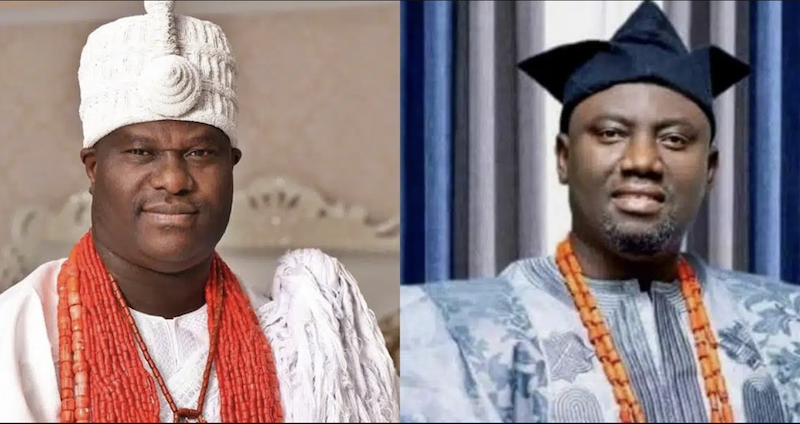The recent visit of the Alaafin of Oyo, Oba Lamidi Olayiwola Adeyemi III, to Osun State sparked controversy and fueled speculation about a potential rift between him and the Ooni of Ife, Oba Adeyeye Enitan Ogunwusi, Ojaja II. The controversy arose because the Alaafin visited the Oluwo of Iwo, Oba Abdulrasheed Akanbi, but did not visit the Ooni, traditionally considered the paramount ruler of the Yoruba people. This omission, coupled with the Oluwo’s subsequent declaration of the Alaafin’s superiority over all other Yoruba traditional rulers, ignited a wave of speculation and heightened existing tensions regarding the hierarchical structure within the Yoruba traditional leadership.
The Alaafin’s palace, however, moved swiftly to quell the rumors and clarify the circumstances surrounding the visit. They asserted that the Ooni’s palace was indeed the intended first stop on the Alaafin’s itinerary. According to the Alaafin’s personal assistant, Kolade Oladele, the Alaafin’s protocol officer contacted the Ooni’s palace to inform them of the impending visit but was informed that the Ooni was out of the country. This information, they claim, prompted the change in plans, leading the Alaafin to visit the Oluwo first. Mr. Oladele emphasized the Alaafin’s commitment to Yoruba unity and development, dismissing the notion of any animosity between the two revered monarchs. He further assured that a visit to both the Ooni and the Osun State Governor, Ademola Adeleke, was forthcoming.
The Olowu of Kuta, Oba Adekunle Makama Oyelude, corroborated the Alaafin’s account, confirming his knowledge of the Alaafin’s initial intention to visit the Ooni. He emphasized that the Alaafin’s failure to visit the Ooni was solely due to the latter’s absence from the country and not a deliberate snub. He expressed his confidence in the continued collaboration between the two prominent traditional rulers for the advancement and unity of the Yoruba people, echoing the sentiments expressed by the Alaafin’s spokesperson.
However, the Ooni’s palace presented a contrasting narrative. Moses Olafare, the Director of Media and Public Affairs for the Ooni, stated that they received no official notification of the Alaafin’s planned visit. He maintained that no communication, either written or verbal, was received from the Alaafin’s palace prior to the Ooni’s departure from the country. He acknowledged that a security operative had reported receiving an inquiry from someone claiming to be from the Alaafin’s palace, inquiring about the Ooni’s availability. However, Mr. Olafare characterized this as an informal inquiry rather than an official notification of an intended visit. He emphasized that the Ooni’s absence was public knowledge, further suggesting that the Alaafin’s palace should have been aware of it.
The conflicting accounts highlight the delicate nature of traditional leadership dynamics and the potential for miscommunication or misinterpretation to exacerbate existing tensions. The public pronouncements from both palaces underscore the importance of clear and formal communication protocols between the two institutions to avoid further fueling speculation and maintain the desired image of unity within the Yoruba traditional leadership. While both sides publicly express their commitment to Yoruba unity, the differing narratives point to a need for improved communication and perhaps a more structured approach to coordinating visits and interactions between the two monarchs.
The incident also underscores the broader issue of perceived rivalry and claims of superiority among various Yoruba traditional rulers. The Oluwo’s public declaration of the Alaafin’s supremacy, while perhaps intended to honor his guest, inadvertently added fuel to the existing debate and highlighted the sensitivity surrounding hierarchical structures within the Yoruba traditional system. This episode serves as a reminder of the ongoing need for dialogue and collaboration among traditional rulers to foster unity and address any underlying tensions that may exist. The future interactions between the Alaafin and the Ooni will be closely watched as an indicator of the true state of their relationship and the broader implications for the unity and stability of the Yoruba traditional leadership.


